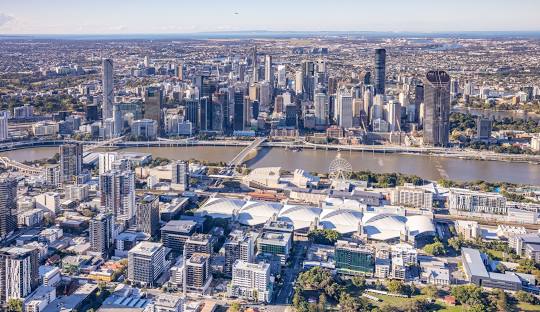
From Industry to Innovation: The Transformation of South Brisbane
Posted by on
South Brisbane has undergone significant transformation over the past decades, shifting from an industrial heartland to a thriving cultural and residential district.
In the mid-20th century, the suburb was heavily industrialized, with its proximity to the Brisbane River making it a strategic location for various industries. However, this location also made it vulnerable to natural disasters, and the 1974 Brisbane flood severely impacted businesses and residents.
In 1977, the former Congregational Church on Vulture Street was sold to the Serbian Orthodox Church. The new owners added two cupolas to the building, converting it into the Saint Nicholas Free Serbian Orthodox Church. Today, the building is recognized for its historical and architectural significance, earning a place on the Brisbane Heritage Register.
South Brisbane continued to evolve with the establishment of key institutions. The Mater Hospital Special School opened on 3 January 1981, later undergoing two name changes—becoming the Lady Cilento Children’s Hospital School in 2014 and the Queensland Children’s Hospital School in 2019.
A significant milestone for South Brisbane’s cultural landscape came on 20 April 1985, when the Queensland Performing Arts Centre (QPAC) was officially opened by Prince Edward, Duke of Kent. This venue became a cornerstone of Brisbane’s performing arts scene, attracting world-class productions and performances.
Between 1987 and 1994, South Brisbane was also home to the Museum of Contemporary Art (MOCA) and the Young Artists Gallery. Located at 164 Melbourne Street, with an additional entrance at 23 Manning Street, MOCA provided an important space for contemporary and emerging artists during its operation.
The most transformative event in South Brisbane’s modern history came with its selection as the host location for World Expo ’88. Built on former industrial land and wharves along the Brisbane River, the Expo showcased global innovation and culture, leaving a lasting impact on the suburb. Following the event, the site was redeveloped into South Bank Parklands, a major recreational and cultural precinct featuring lush gardens, waterfront attractions, and entertainment venues.
Today, South Brisbane is a vibrant, high-density residential and commercial area known for its proximity to the city centre, excellent public transport connections, and thriving cultural scene. The suburb’s journey from industrial hub to a sought-after urban destination highlights its resilience and adaptability in the face of change.